
“Should I stick with my gas water heater or switch to the heat pump water heater?” Has this question recently […]

As energy efficiency becomes increasingly important, more Australian homeowners are moving away from traditional water heaters and embracing heat pump installation.
Heat pump installation is gaining strong momentum thanks to its cost saving benefits and overwhelming support by various federal and state government incentives.
If you are still giving heat pump hot water a second thought, this article will explain the costs, advantages, and difficulties of installing it in Australia to help you know it real worth.
A heat pump hot water system works by taking ambient heat from the air and using it to warm up water in a tank.
It works just like a refrigerator or an air conditioner, but reversed. Rather than producing heat, it moves heat from the surroundings into the water.
This technology is also said to be up to four times more energy efficient than traditional electric resistance systems.
It can minimise household energy consumption, especially when combined with solar PV systems.

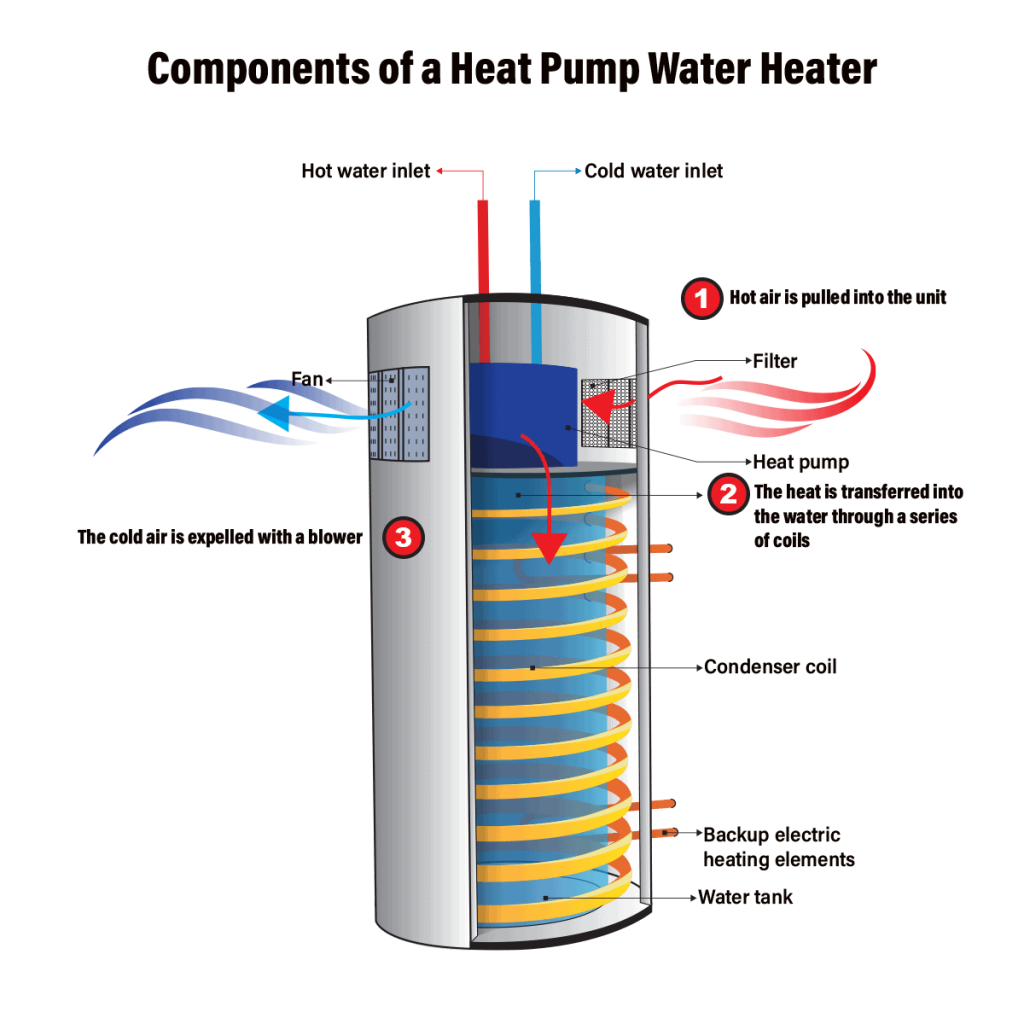
The cost of heat pump installation may differ according to brand, capacity, location, and complexity of installation.
Australia provides various incentives and rebates to counter the initial expenditures:
Depending on the location and the type of system, rebates can save $500 to $1,500 or more on the cost.
Heat pumps are the most energy-efficient water heating systems on the market.
They consume 60% to 75% less electricity than conventional electric hot water systems by extracting heat from the ambient air instead of producing it from electricity.
This makes for huge savings in terms of energy use and electricity bills.
Households can save thousands of dollars throughout the system’s lifespan, some 10 to 15 years.
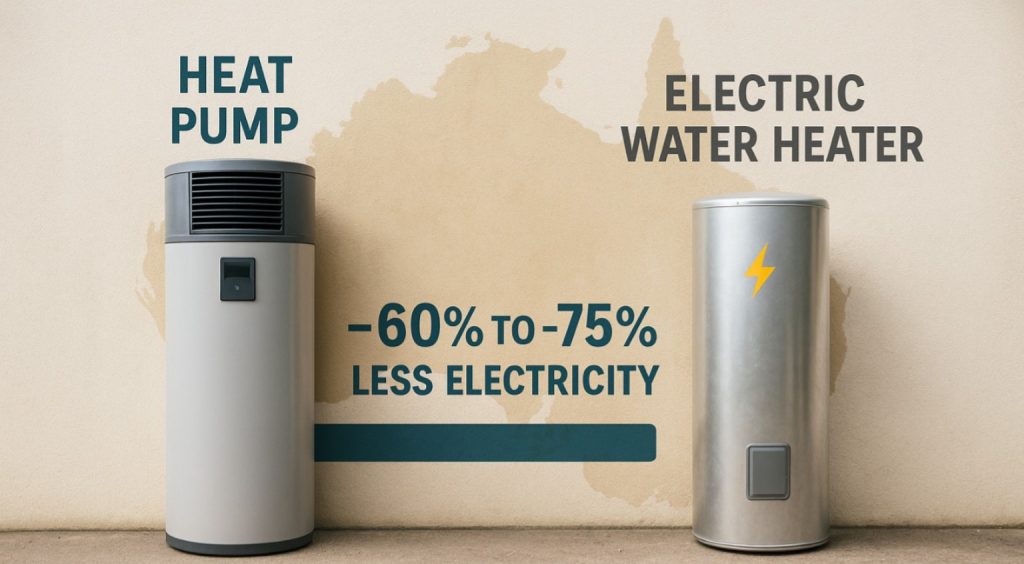
Since they use much less electricity, heat pumps reduce a home’s carbon footprint.
If the electricity used comes from renewable energy sources, like solar panels, then its carbon-neutral credentials are even more impressive.
This is why heat pump installations are a perfect solution for homes that want to become carbon-neutral or eco-friendly.
Heat pump water heaters can be scheduled to run during peak solar production times, enabling homeowners with rooftop solar installations to optimise their usage of self-consumed electricity.
This converts solar energy into stored thermal energy in the form of hot water, enhancing the value of solar investment and lowering grid dependence.
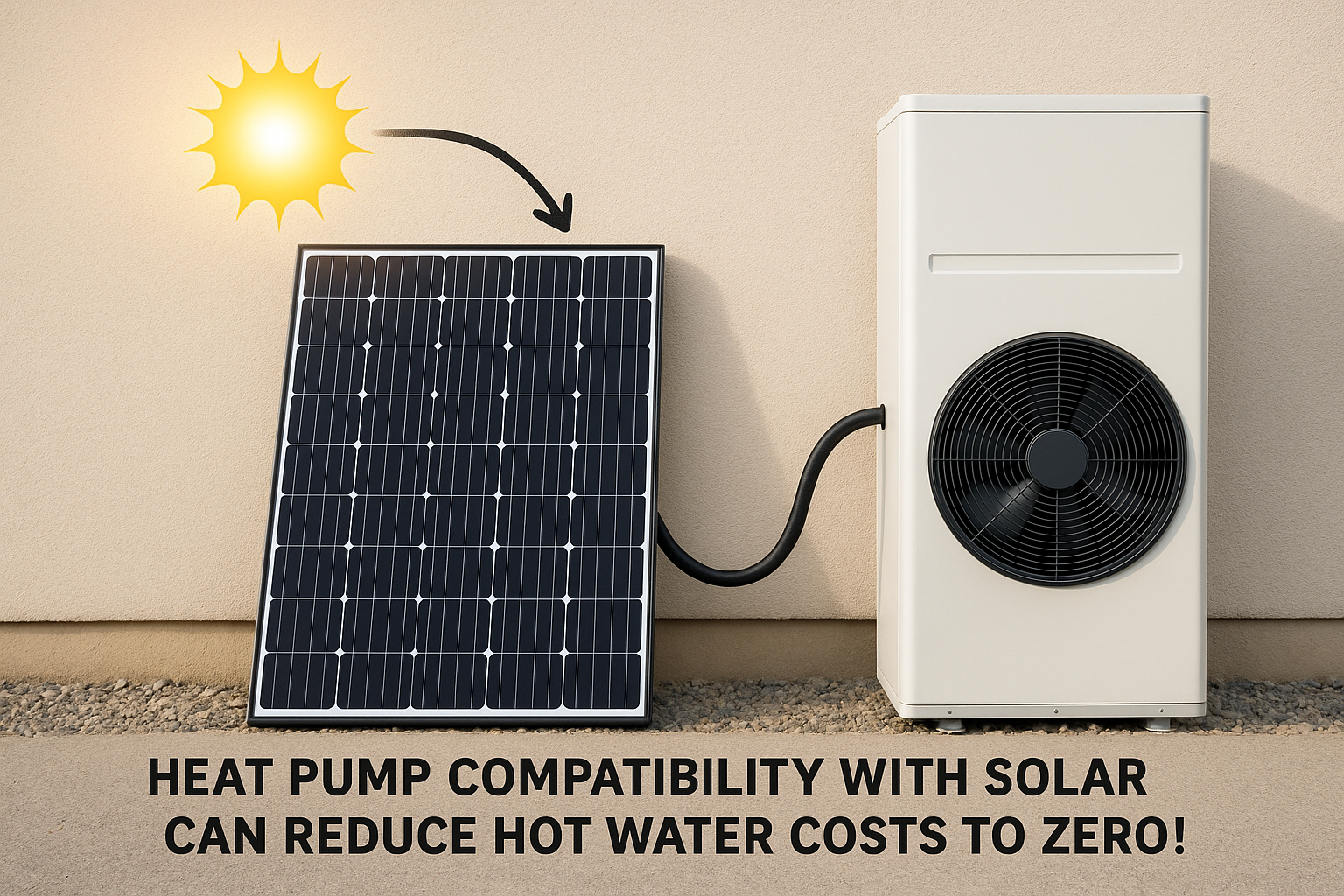
Although the upfront cost of hot water heat pump installation is greater, operating expenses over the long term are significantly less owing to energy conservation.
For most homes, there is a return on investment between 3 and 5 years.
When government rebates are included, the payback is even sooner.
After the payback period, the savings compound each year.
Contemporary heat pump systems are optimised to operate effectively in numerous climates, including large parts of Australia.
Some models have electric boosters to provide hot water even during cold temperatures.
They generally incorporate programmable timers and “smart” features for maximum efficiency in energy consumption.
Modern heat pump systems are quiet, even quieter than refrigerators in most cases.
They need very little maintenance—mostly occasional filter cleaning and one annual check-up by a qualified technician.
This is easy for busy homes.
In contrast to gas water heaters, heat pumps do not depend on combustion, which eliminates hazards related to gas leaks or carbon monoxide poisoning.
They are safer to use and more adaptable to enclosed dwelling spaces where ventilation can be restricted.

As Australia transitions to clean energy and retires gas in a lot of its regions, putting in a heat pump enables a house to meet upcoming sustainability regulations and trends.
It adds value to the appeal of the home in the property marketplace, particularly for environmentally friendly buyers.
In colder climates (such as in areas of Victoria or Tasmania), heat pump performance will reduce if ambient air falls below 5 °C.
Electric boosters or defrost cycles are included in some models to continue the performance, but at the cost of higher energy consumption.
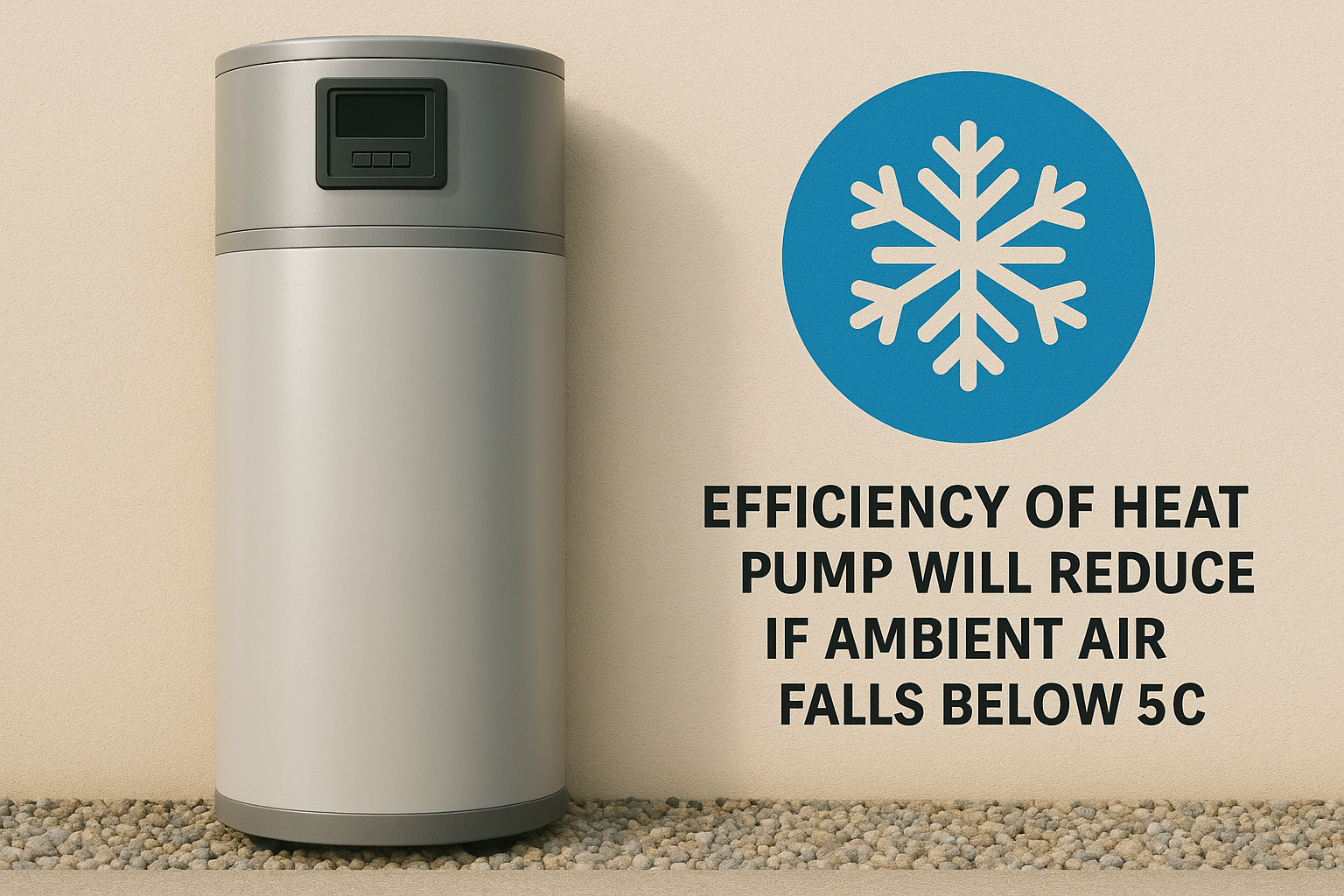
Heat pump installation require good ventilation and space and are, therefore, not ideal for small, enclosed indoor areas.
External wall mounting or ventilated garages are best.
Compared to traditional systems, heat pumps are more expensive initially.
However, government incentives and energy savings compensate over time.
While quiet, the heat pump compressor still makes a low hum noise.
This will be problematic if it is installed too close to bedrooms or neighbouring homes.
Though generally low maintenance, heat pumps need to be inspected every year to verify that filters, fans, and refrigeration systems are in top form.
Yes, installing the best heat pump hot water system in Australia is usually worthwhile for most Australian homes, particularly in the long run.
The interplay of lower operating expenses, government incentives, and environmental advantages makes it a strong argument to shift from conventional systems.
Some of the following points further solidify its worth:
Climatic Suitability: The climate of Australia—especially in NSW, Queensland, South Australia, and Western Australia—is perfectly suited for heat pump operation.
In even cooler climates, high-efficiency models with integrated boosters perform consistently throughout the year.
Increasing Energy Costs: As electricity prices keep rising, decreasing domestic energy consumption has become a top goal.
Heat pumps provide one of the best means of reducing energy expenses over the long term.
Government Assistance: Having access to large state and federal rebates eliminates much of the cost barrier to adoption, allowing average families to transition more affordably.
Going Green: With increasing pressure to reduce carbon output, a heat pump purchase shows environmental responsibility.
It also sets homes up for an inevitable future when sustainability legislation tightens up.
Higher Property Value: Energy-efficient houses are more desirable to purchase.
A new, efficient hot water system can be a value-enhancing feature when selling.
Integration with Solar Power: For homes that have installed rooftop solar, a heat pump integrates with their energy plan by using daytime energy to heat up the water, optimising solar self-consumption.
In short, for most Australians, a heat pump hot water system is not merely a convenient improvement but also an astute investment in long-term cost savings, environmental responsibility, and real estate value.
To guarantee efficiency, safety, and compatibility with government rebate schemes:
Select a certified plumber and electrician.
Verify that the installer is CER-registered to handle STCs.
Request references, unit warranties, and noise/emission ratings.
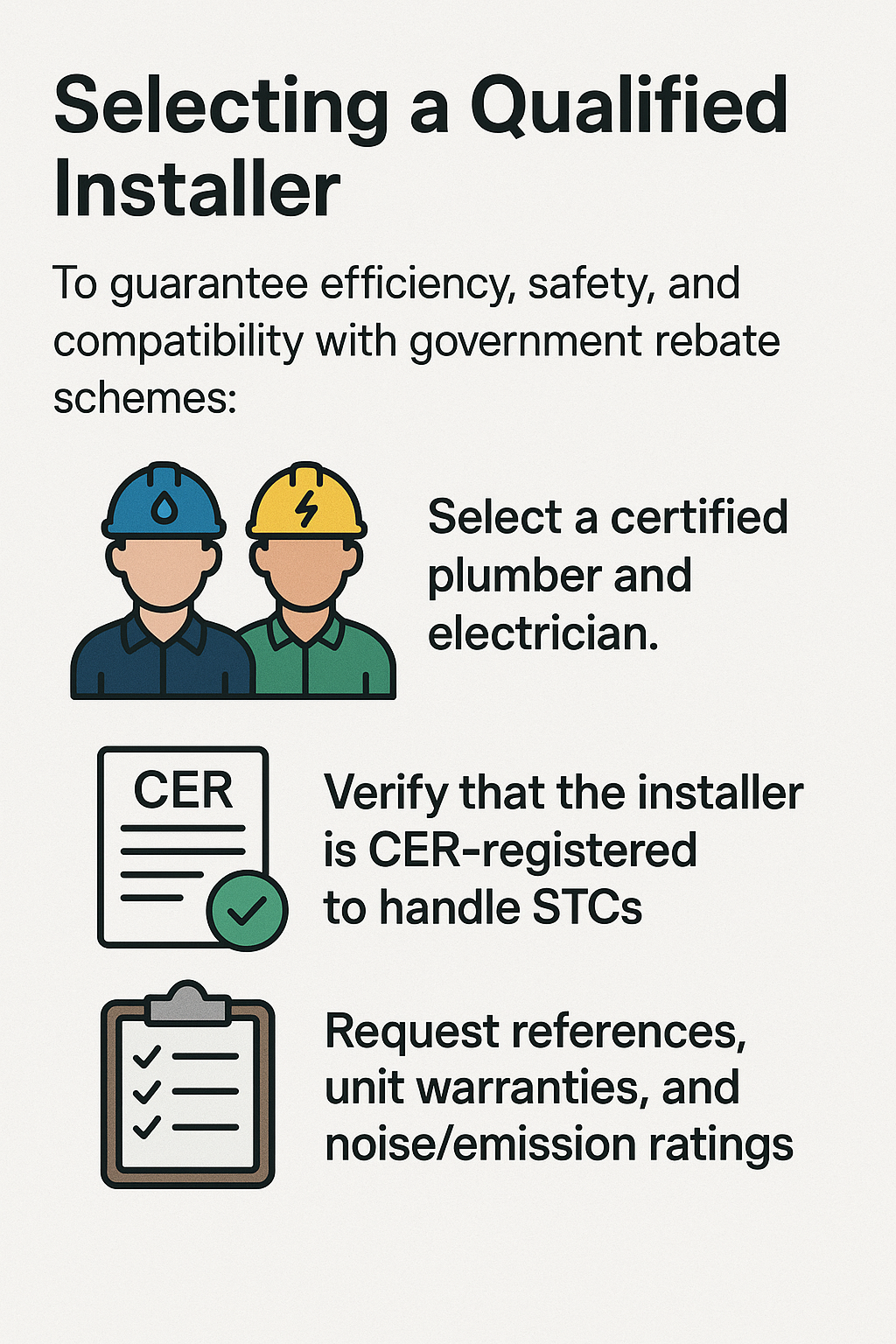
Heat pump hot water installation is a savvy option for most Australian homes seeking to slash energy bills, decrease emissions, and get ready for the sustainable future ahead.
With rising rebate incentives and the booming demand for sustainable housing, the technology is gaining mainstream popularity.
If you’re considering replacing your hot water system, now is the perfect time to consider a heat pump installation—particularly if you’d like to capitalise on solar savings and government rebates.